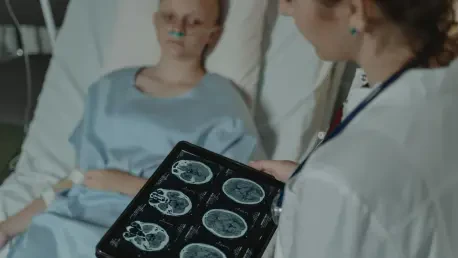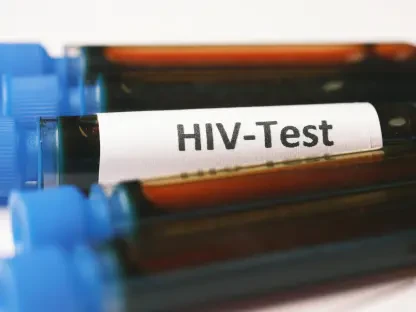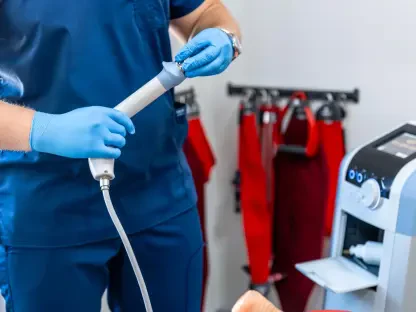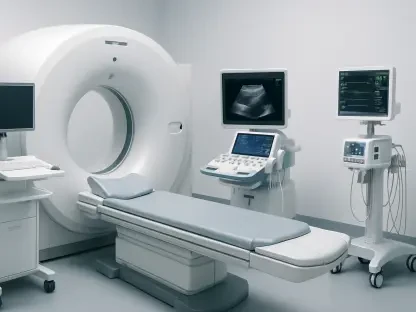Imagine a world where the deadliest form of brain cancer, glioblastoma, no longer leaves patients and doctors waiting months for critical answers about tumor progression, and at the University of Virginia (UVA) School of Medicine, researchers are turning this vision into reality by harnessing artificial intelligence (AI) to revolutionize how this aggressive disease is managed. Glioblastoma, accounting for over half of primary brain tumors, often claims lives within just 15 months of diagnosis, making timely and accurate assessments vital. The current standard of waiting several months for imaging results or relying on invasive procedures creates significant delays in treatment decisions. UVA’s innovative approach promises to bridge this gap, offering hope through cutting-edge technology that could redefine patient care. This groundbreaking work focuses on distinguishing between actual tumor growth and treatment-related brain changes, a challenge that has long hindered effective medical responses.
Revolutionizing Diagnosis with AI and Imaging
The core of UVA’s research lies in a novel integration of magnetic resonance imaging (MRI) and dynamic positron emission tomography (PET), creating multidimensional brain scans that AI can analyze with remarkable precision. Led by researcher Bijoy Kundu, PhD, the team has developed a system to evaluate whether changes in the brain post-treatment signal tumor progression or merely side effects from therapies like chemotherapy and radiation. Initial tests on 26 glioblastoma patients revealed an impressive 74% accuracy rate in making this distinction, surpassing existing clinical benchmarks. Such accuracy is a significant step forward, as it reduces the uncertainty that often clouds medical decision-making in the critical early stages after treatment. By providing clearer insights, this technology could enable physicians to adjust care plans swiftly, potentially improving patient outcomes in a disease where every moment counts. The promise of non-invasive, rapid diagnostics offers a stark contrast to the delays inherent in current methods.
Beyond the initial success, the UVA team is committed to pushing the boundaries of this AI-driven approach even further. With a target accuracy rate above 80% for practical clinical use, ongoing efforts focus on training the AI with additional patient data to refine its capabilities. This continuous improvement is essential, as glioblastoma’s aggressive nature demands tools that can keep pace with its rapid progression. The ability to differentiate between tumor growth and treatment effects without resorting to invasive brain surgery could transform the standard of care. Moreover, early detection of recurrence through this method, as highlighted by David Schiff, MD, co-director of UVA Health’s Neuro-Oncology Center, allows for prompt treatment adjustments. This adaptability is crucial for extending survival and enhancing quality of life for patients facing such a formidable diagnosis. The research underscores a broader shift toward leveraging technology to address some of medicine’s most pressing challenges.
Funding and Future Prospects for Glioblastoma Care
Support for this pioneering work comes in the form of a $90,000 grant from UVA’s Ivy Biomedical Innovation Fund, a crucial investment aimed at enhancing the AI’s deep-learning algorithms. This funding will drive efforts to improve the system’s precision, ensuring that doctors receive actionable insights much sooner than with traditional methods. The financial backing reflects a strong belief in the potential of this technology to change the landscape of brain cancer treatment. By reducing the guesswork that often accompanies post-treatment evaluations, the system empowers clinicians to focus on delivering tailored care with greater confidence. For patients and their families, the prospect of faster clarity on disease status could alleviate much of the anxiety tied to prolonged waiting periods. This initiative represents not just a technological advancement, but a profound shift in how care is approached for one of the most lethal cancers known to medicine.
Looking back, the strides made by UVA in integrating AI with advanced imaging for glioblastoma care marked a pivotal moment in medical innovation. The journey from a 74% accuracy rate to aspirations of exceeding 80% showcased a relentless pursuit of excellence in addressing diagnostic challenges. Reflecting on this period, it became evident that such technology had the potential to save lives by enabling quicker, more informed decisions. As the project evolved with dedicated funding and expertise, it laid the groundwork for broader applications in healthcare. The next steps involved scaling this approach to benefit more patients, refining algorithms through extensive data analysis, and collaborating with medical communities to integrate these tools into everyday practice. Ultimately, the legacy of this research pointed toward a future where technology and compassion converged to offer renewed hope in the fight against devastating diseases like glioblastoma.









